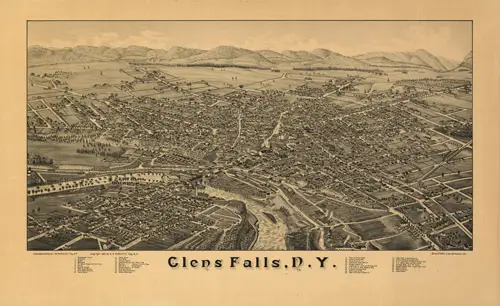
“Glens Falls has attained fame in all parts of the civilized world as a manufacturing town. Not only are her products distributed all over the United States, but they contribute somewhat to the exports of the country. Between 7000 and 8000 persons are employed by the various establishments in town….At the present time Glens Falls is enjoying a period of prosperity which makes it the envy of many other towns with equal natural resources.”
-1897 Glens Falls Area Phone Book
The Great Fire of 1902
The Third of the Great Fires
On April 23, 1902 a devastating fire destroyed much of downtown Glens Falls. This was the third of the great fires that ravaged downtown Glens Falls and left many businesses scrambling.
Even as many were still reeling from this tragedy, two young men were making plans for the future.
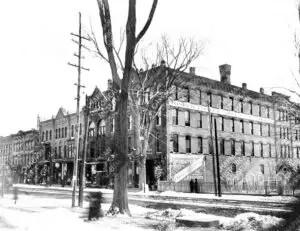
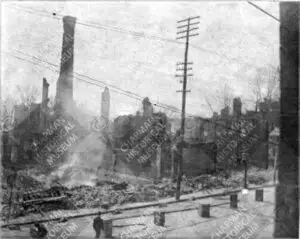
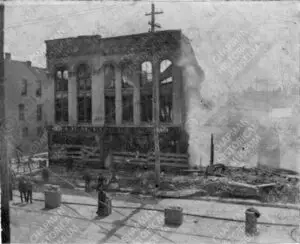
Humble Beginnings
Joseph (J.R.) McMullen and Walter Leavens, grew up in Glens Falls, they had family here and worked at various jobs before eventually apprenticing with the Joseph Fowler Shirt and Collar Company (located where the Glens Falls National Bank now stands on Glen Street).
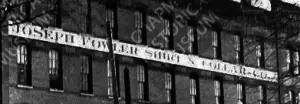
By the time this fire destroyed his business Joseph Fowler had been dead for a couple of years. The business at this time was run by his brother, Byron “BB” Fowler, along with two junior partners. After they completed their apprenticeships, J.R. worked at the business end in New York City, while Walter worked at the production end in Glens Falls. When news of the fire reached J.R., he saw it as an opportunity and immediately began discussing plans with Walter to strike out on their own.
Displaying the keen foresight that would characterise their business dealings, JR and Walter met with BB and struck a deal to split the business. JR and Walter would take the shirt business, leaving BB with the detachable collar business. The two young men took their portion of the insurance settlement and started their own shirt business. Legend goes that they looked around at several properties and when they surveyed the land where the building stands, they found a shamrock. Being of sound Irish stock, JR took this as a fortuitous sign, and incorporated this lucky symbol into their logo.
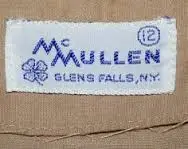

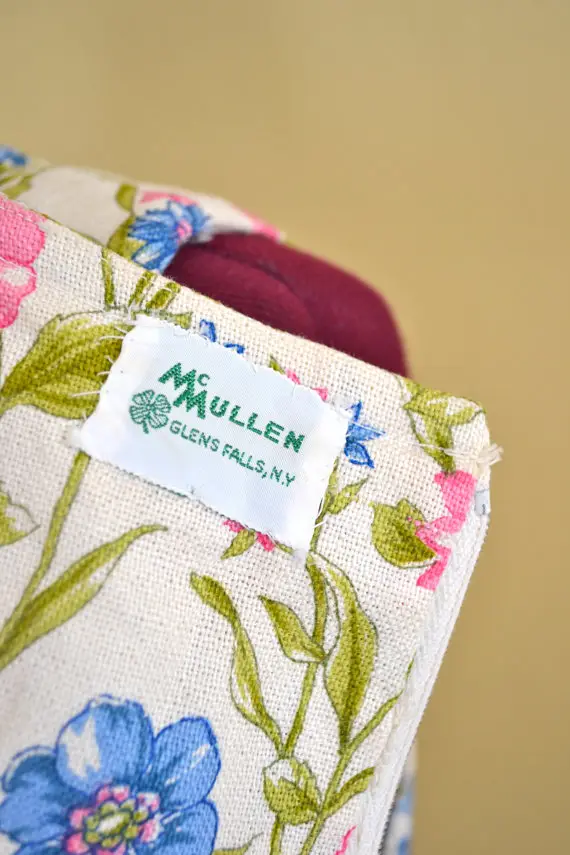
Maybe this is true, maybe…But it doesn’t entirely fit with the business sense they displayed at other times. What seems more probable, or at least would have factored into this decision is the properties proximity to the railroad tracks at that time. The station was across the street, the tracks cut through what is now the Loading Dock parking lot. Once the factory was built, they capitalized on this with their own railroad spur, allowing shipments of fabric to be offloaded right at their door!

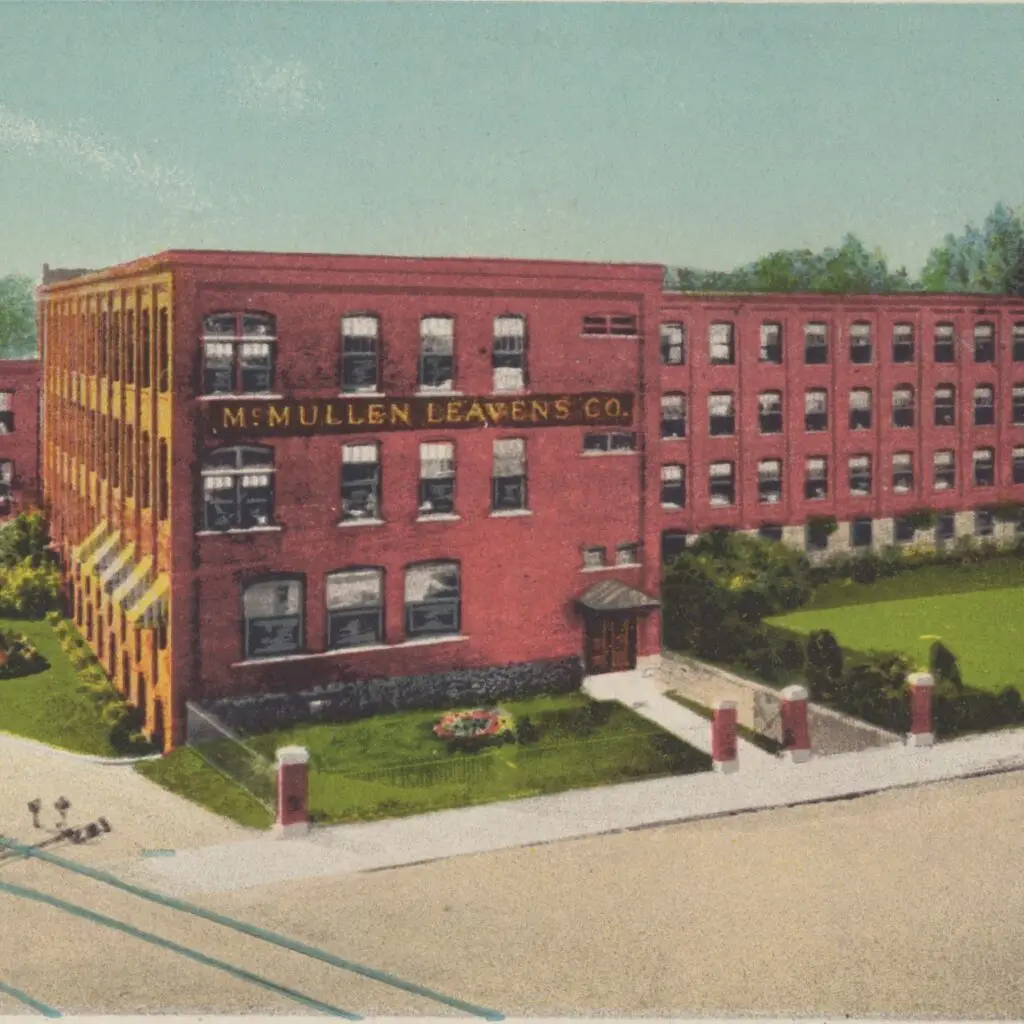
They worked with local architect Ephraim Potter to design their factory. They had very specific ideas about what they wanted. Intending to make a high quality product, they insisted on walls lined with large windows, allowing them to capitalize on the natural lighting, creating an optimal working environment to guarantee consistent quality. Legend also says that while they waited for their factory to be built, they had a temporary set-up somewhere else in town and were already fulfilling orders for high end stores across the country.
Many people hear the word factory, and certain images pop into their heads, generally not good ones. People hear Shirt Factory, and all too often they think working here was just like the conditions at The Triangle Shirtwaist Factory. From what we can tell though, this was nothing like that.
In their hey-day, McMullen-Leavens employed 700 people, each floor had a designated purpose and each person had a specific job to perform. At times, when demand was greater, they ran buses to bring workers from further afield and operated satellite locations in those areas too.
Old newspaper carry stories of their basketball and bowling teams. There’s even a reprint of a letter from Father Flanigan, thanking the men and women of the McMullen Leaven’s Shirt Factory for their generous donation to Boy’s Town.
They’re becoming more infrequent, but every so often there will be an obituary that mentions working at the factory,even if it was for just a few years.
Folks still come in reminiscing about a family member who worked here.
All of these indicate that the men and women who worked here felt part of a family, that they were proud of the work they were doing.
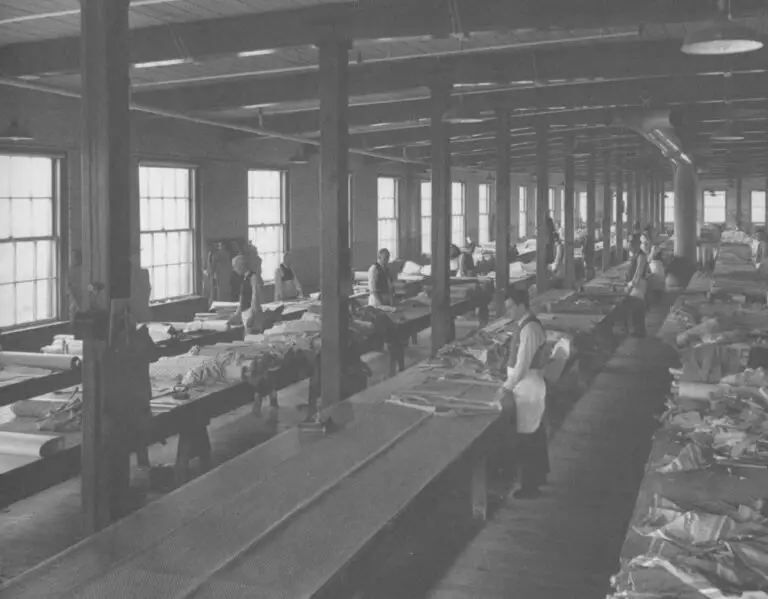
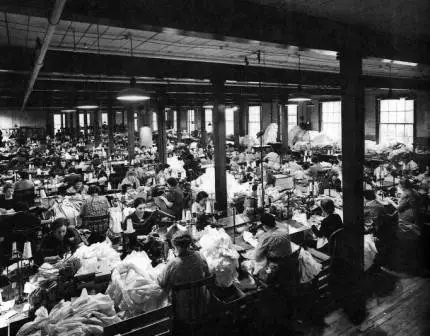

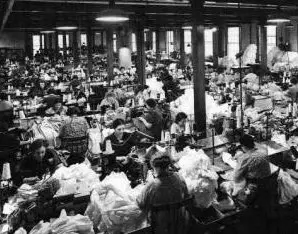
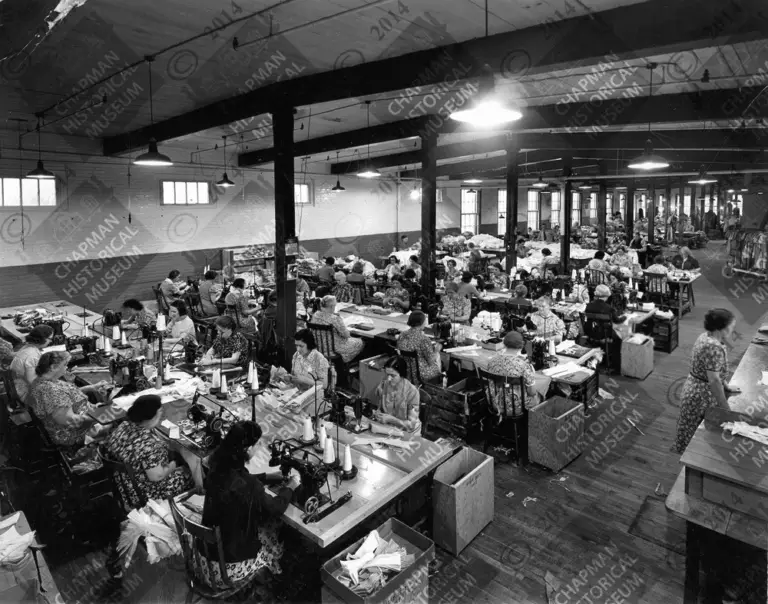
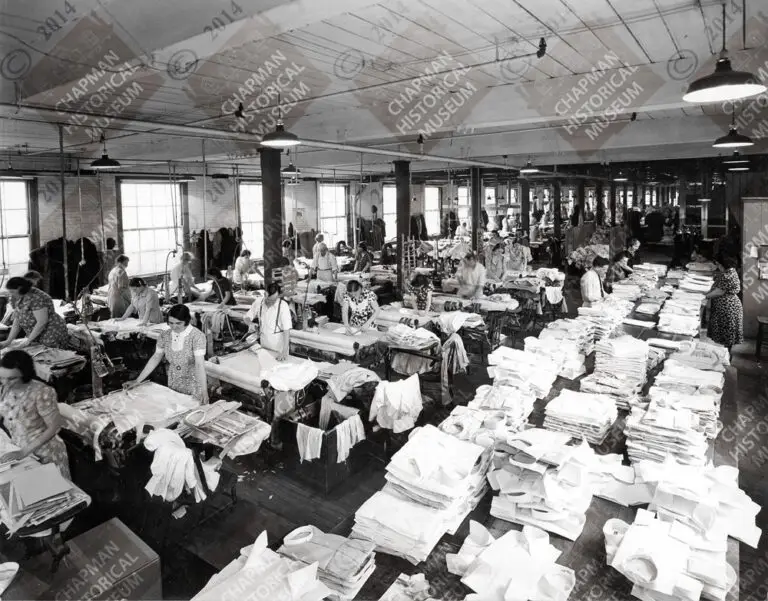
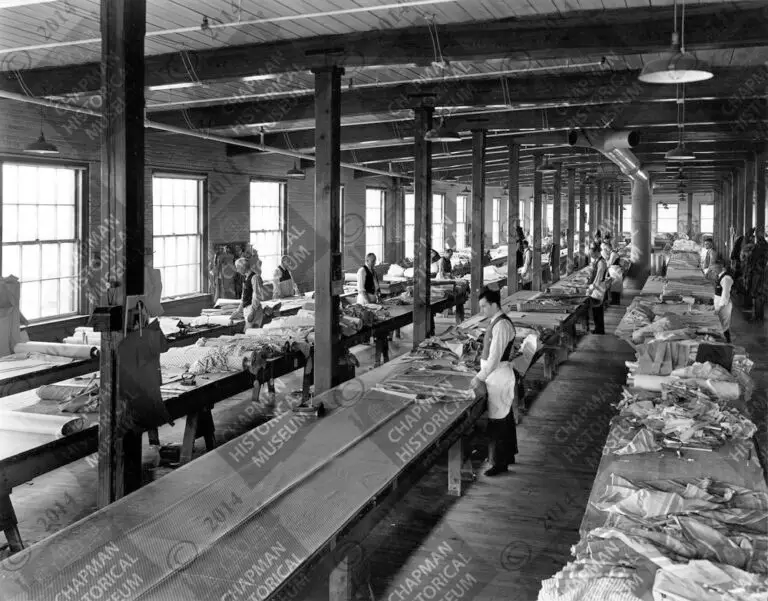
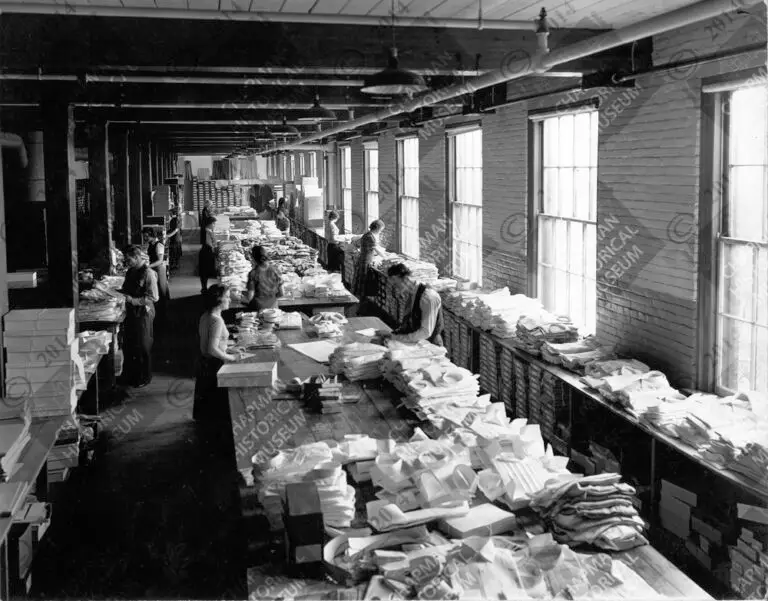
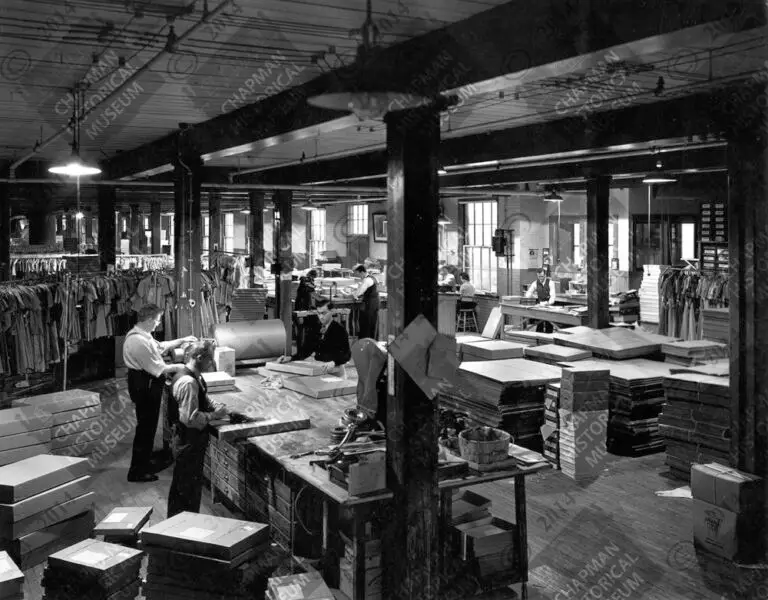
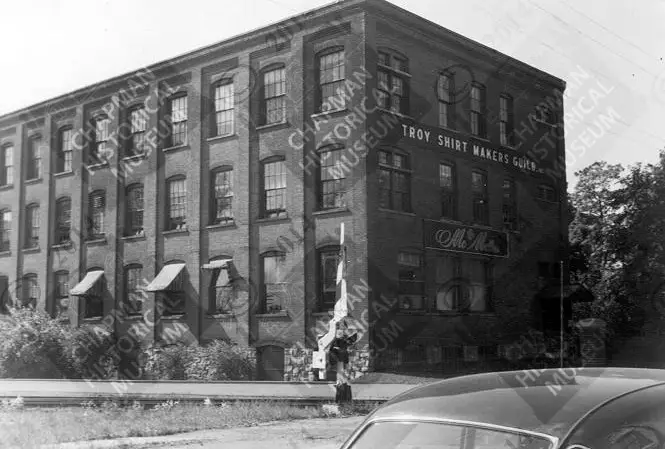
By 1910, JR and Walter paid off their initial investment as demand for their shirts continued to grow, leading them to expand on the buildings construction by adding another building that connects to the original building via short hallways. When Walter Leavens passed away in 1922, the company’s net worth reported to be $12 million, the equivalent of $163 million today.
In 1935 J.R. McMullen again displayed the keen intuition that had previously enabled them to turn disaster into opportunity, as he worked with in-house designer Dorthy Cox, to take the company in a new direction. The company’s product line diversified with the introduction front-buttoned, shirtwaist dresses, becoming a leader in a new fashion trend that would land the McMullen name on the pages of fashion magazines like Vogue and Harpers Bazaar. The business reputation continued to grow and profit margin increased until J.R.’s death.
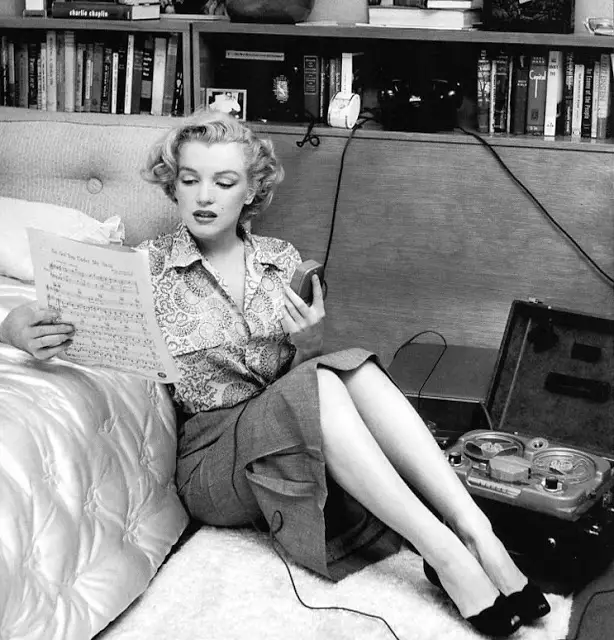

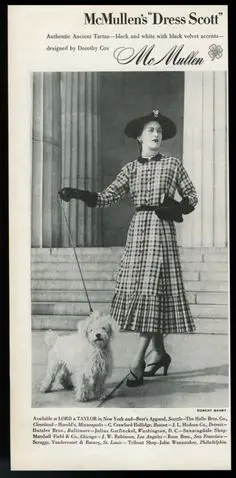
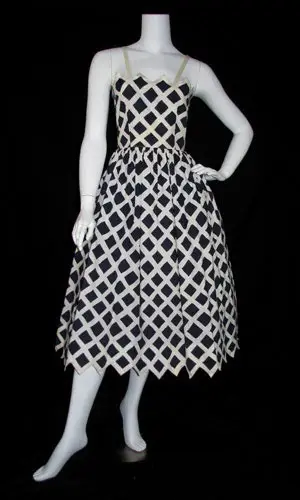
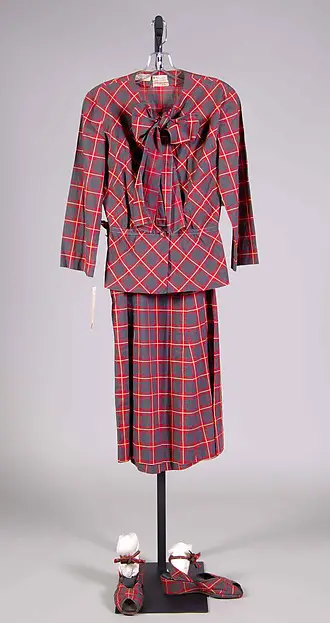
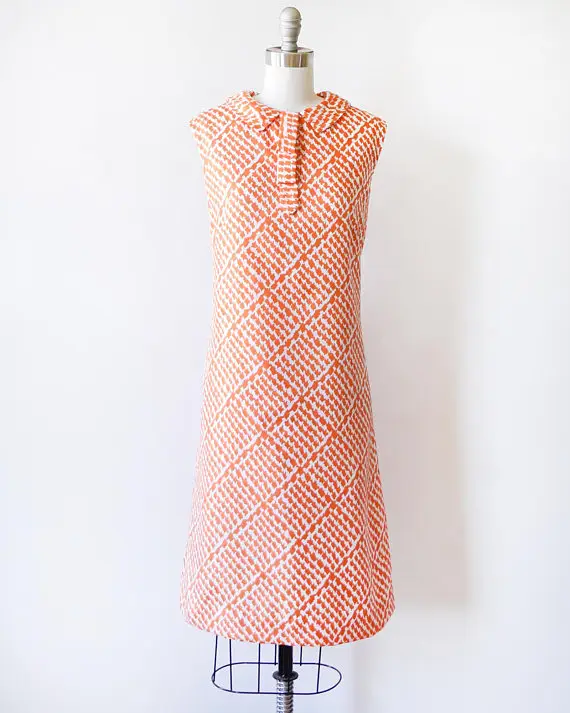
After his death, his heirs split the business, but without J.R. McMullen at the helm, the business began to falter. It was not long before Dorothy Cox left the company. In the ensuing years there were a number of similar shifts within the company, as well as changes to the economic landscape that caused the workforce at the factory slowly shrink until it closed its doors for good in 1996.
The Legacy
For almost a hundred years the McMullen Company was an important part of the Glens Falls community, not just because it was a major employer, but because of the sense of pride it inspired in the people who worked here.
Today the building continues to receive visitors who come expressly to wander the halls, recalling memories of when they or a relative worked here, visiting someone at the factory, shopping at the outlet, etc. We’ve heard many stories of McMullen garments that were passed down in a family or even folks who bought as much as they could before the factory closed and still have some shirts and ties unworn in the factory boxes. Every so often a stray button or pin will suddenly work it’s way out of a crack in the floor boards and lay there waiting to be rediscovered. The architechtural elements of the building that the current owner first fell in love with, that so many others have come to apreciate over the years, are present because of the factory that was here first. They may no longer being sewing here, but they have left us much to appreciate.
It would be almost impossible to separate the property from the community’s memories of the Shirt Manufacturers who created it. Rather than try to do so this history has been embraced and celebrated in displays throughout the building.
We are indebted to the Chapman Historical Museum, not only for the images on this site, but for the historical panels lining the hallway between studios 101 and 106. To read more about the buildings history, as well as view gorgeous images of the building, its founders and McMullen advertisements from fashion magazines, read the book The McMullen Leavens Company: How Hometown Worked, written by Thomas K. Simpson and published by the Chapman Historical Museum.
As you wander the halls you will also find shirt and dresses in display cabinets. These are but a few of the items in our personal collection of garments made under the McMullen label in Glens Falls.
When they business closed, much was left behind. After buying the building, they were all saved, if for no other reason than they belonged here. Today many of the original machines and benches are in the halls for you to see and touch
Courtesy The Chapman Historical Museum
If you have wandered the first floor, you’ve probably noticed the panels between Studios 101B and 106 that detail the factory history. These panels were originally part of an exhibit at the Chapman Historical Museum in 2002. When curating that exhibit, the museum also interviewed several people who had worked in the factory The original intent was to include these with the exhibit on the McMullen Leaven Company. Unfortunately they were not able to incorporate them into the exhibit.
In 2016 the museum shared the original audio with us so we could convert them to a digital format to share, because no can tell their story as well as they can! We don’t have the exact dates for the interviews, but they were conducted between 2000 and 2001.
Here are the audio files we have for interviews with
- Nan Fusco and Dorothy Sanders (pressing and sewing, tracks 1-13)
- Andy Delsignore (cutter, track 14)
- Betty Gazzillo (outlet store, track 15)
- Betty Ormsby and Beverly Bolster (sewing, track 16)
- Betty Delsignore and Mary Purdy (sewing 2nd floor, track 17)
- Ethel Cook (seamstress, track 18)
- Mike Ghizzoni (cutter, track 19)
Scroll to the bottom of the track list for the player. We tried to get the best possible audio on this, but some of the tracks may still play at a lower volume that others. If you’re not hearing anything, you may need to adjust the volume.

